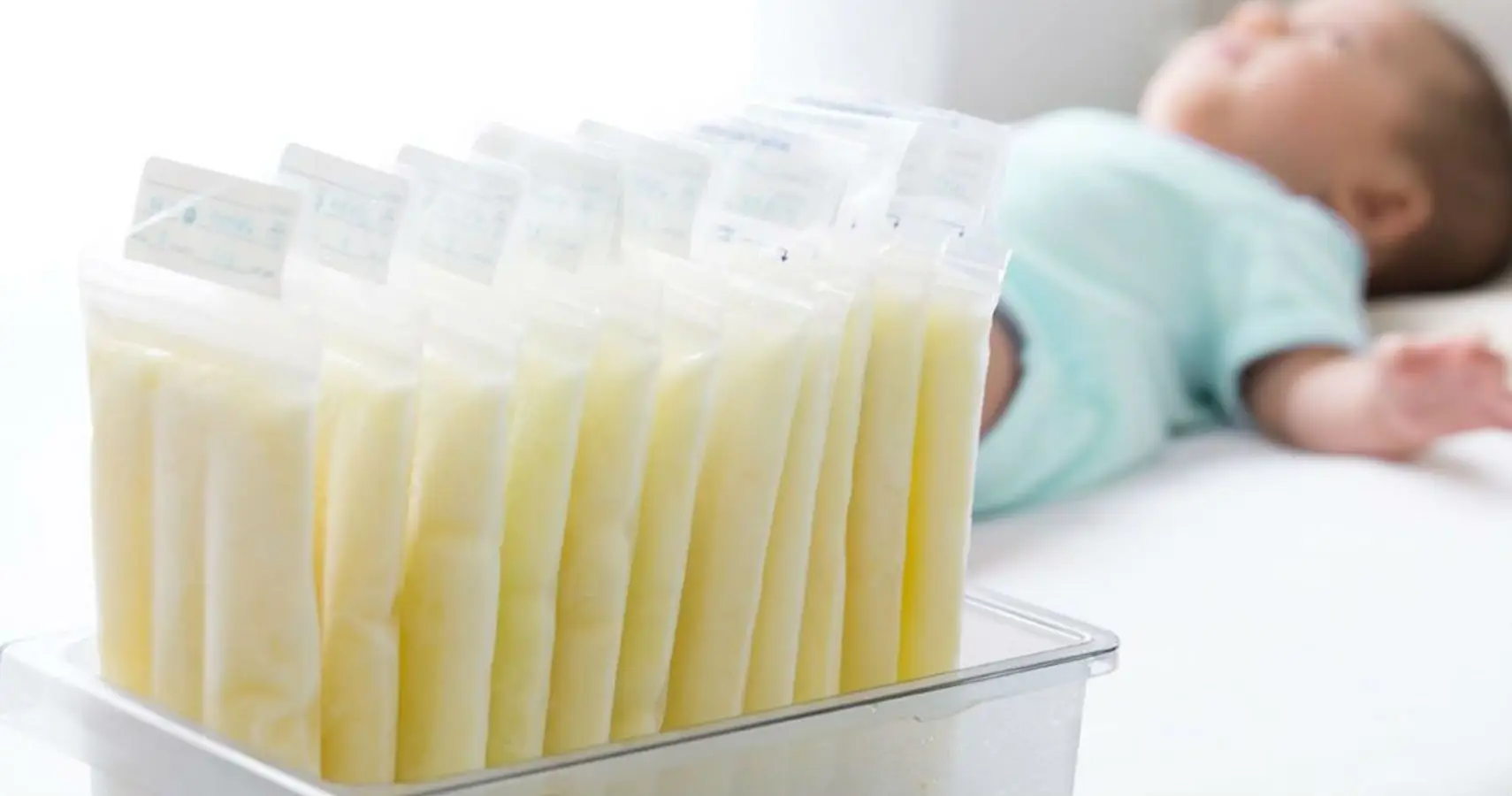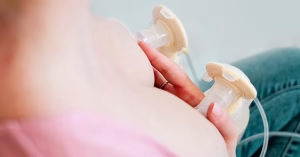Safe Milksharing Practices: How to Safely Share Breastmilk
Human milk is a remarkable, living food — uniquely tailored to meet the needs of human infants. It contains antibodies, enzymes, hormones, stem cells, and over 200 known oligosaccharides (specialized carbohydrates) that help shape a baby’s immune system and gut microbiome.
For many families, producing enough milk is straightforward. For others, due to low supply, illness, adoption, or other circumstances, supplementation becomes necessary. In these moments, milksharing — receiving milk from another lactating person — can be a safe and empowering option when approached with knowledge, trust, and good practices.
Milksharing has existed for thousands of years, historically through wet-nursing and community care. Today, it can take two main forms:
- Formal milk banking — milk is donated, pasteurized, and distributed (often to fragile or hospitalized infants).
- Peer-to-peer milksharing — families connect directly to share milk, either with people they know or through online milksharing communities.
When done safely, peer-to-peer milksharing can help maintain exclusive human milk feeding and the many health benefits that come with it. But just as with any shared food source, there are considerations to keep everyone safe.
1. Informed Choice
Making an informed choice means understanding both the benefits and the potential risks before entering into a milksharing arrangement.
Why this matters:
- Human milk lowers the risk of ear infections, respiratory illnesses, NEC (necrotizing enterocolitis) in preterm infants, and sudden infant death syndrome (SIDS).
- It supports brain development, gut health, and long-term health outcomes for both the baby and the mother.
- Even though the risk of disease transmission through human milk is generally low, it is not zero. For example, HIV can be transmitted through breastmilk, although antiretroviral therapy greatly reduces this risk.
Informed choice also means weighing the risks of using formula or other breastmilk substitutes against the potential risks of donor milk. Infant formula can be life-saving when needed, but it does not contain the live cells, antibodies, and complex bioactive components found in human milk. Studies show formula feeding is associated with higher rates of certain infections, digestive disturbances, and chronic conditions later in life. Understanding both sides of the equation — the possible risks of milksharing and the known risks of breastmilk substitutes — gives families a fuller picture when deciding how to feed their baby.
Examples of what to consider when making an informed choice:
- Does the baby have specific medical needs that might require pasteurization (e.g., premature birth, immune compromise)?
- Do you feel comfortable with raw milk from a trusted donor, or do you want to pasteurize it at home?
- Is this a one-time donation or an ongoing arrangement?
Tip: Write down your priorities (e.g., dietary preferences, pasteurization, screening requirements) before starting the conversation with a donor.
2. Informed Screening
Screening isn’t about mistrust — it’s about building mutual confidence. The best milksharing arrangements begin with honest, respectful conversations between donor and recipient.
Health history is important because:
- Some viruses (HIV, HTLV-1, CMV) and bacteria can be transmitted through human milk.
- Certain medications, herbs, and recreational substances can pass into milk.
- Dietary allergens in the donor’s diet (e.g., dairy, soy, peanuts) may affect sensitive infants.
What to ask about:
- Medical screening: Has the donor been tested for HIV, Hepatitis B/C, syphilis, or other infections? When?
- Medications: Some medications are fully compatible with breastfeeding (e.g., ibuprofen, most antibiotics), while others may be contraindicated.
- Example: Chemotherapy drugs and radioactive iodine are unsafe during lactation.
- Example: High-dose aspirin should be avoided because of the risk of Reye’s syndrome.
- Trusted resources:
- Substances & lifestyle: Tobacco, excessive alcohol, recreational drug use, or high caffeine intake can all pass to baby in varying amounts.
- Dietary considerations: If your baby reacts to certain foods, discuss whether the donor consumes them regularly.
How to document:
- Use a simple written questionnaire or online form to ensure all key areas are covered.
3. Safe Handling of Donor Milk
Milk is a perishable living food — its immune and nutritional properties are best preserved when handled with care.
Best practices:
- Hygiene: Wash hands before pumping or handling milk. Use clean, sterilized pump parts and storage containers.
- Temperature control:
- Refrigerate at or below 39°F (4°C).
- Freeze at 0°F (-18°C) or colder for longer storage.
- Fresh milk in the fridge: use within 3–4 days.
- Frozen milk: ideally use within 6 months (up to 12 months if deep-frozen).
- Transport: Use an insulated cooler with ice packs if milk will be outside refrigeration for more than an hour.
- Thawing: Thaw slowly in the refrigerator, or more quickly in a bowl of warm (not hot) water. Avoid microwaving, which can cause hot spots and degrade milk’s bioactive components.
Why this matters:
Improper handling can lead to bacterial growth or loss of milk’s protective enzymes and antibodies. Even a small lapse (like leaving milk in a hot car) can turn a safe supply unsafe.
4. Home Pasteurization (Optional but Sometimes Recommended)
Many families use raw donor milk from trusted sources without issue. However, home pasteurization is an option for those who want an added layer of safety — especially when the donor’s full medical history is unknown or when feeding preterm or medically fragile infants.
Flash-heating method:
- Place expressed milk in a small glass jar.
- Stand the jar in a pot of water and heat the water until it reaches a rolling boil.
- Once boiling, remove the jar and allow it to cool.
- This method has been shown to inactivate HIV and many bacteria while retaining a significant amount of milk’s immune properties.
Considerations:
- Pasteurization will reduce some immune factors in milk, but the nutritional and protective value is still higher than formula.
- Some families pasteurize only certain batches (e.g., from a new donor) until they feel comfortable.
Why Safe Milksharing Matters
When families follow these practices:
- Babies receive the unmatched benefits of human milk.
- Parents gain peace of mind knowing they’ve taken steps to reduce risk.
- Donors feel respected and confident that their gift is being used responsibly.
Milksharing is both ancient and modern — a practice rooted in community care and backed by growing awareness of its benefits. By approaching it with informed choice, transparent screening, careful handling, and optional pasteurization, families can protect the health of their babies while honoring the generosity of their donors.




